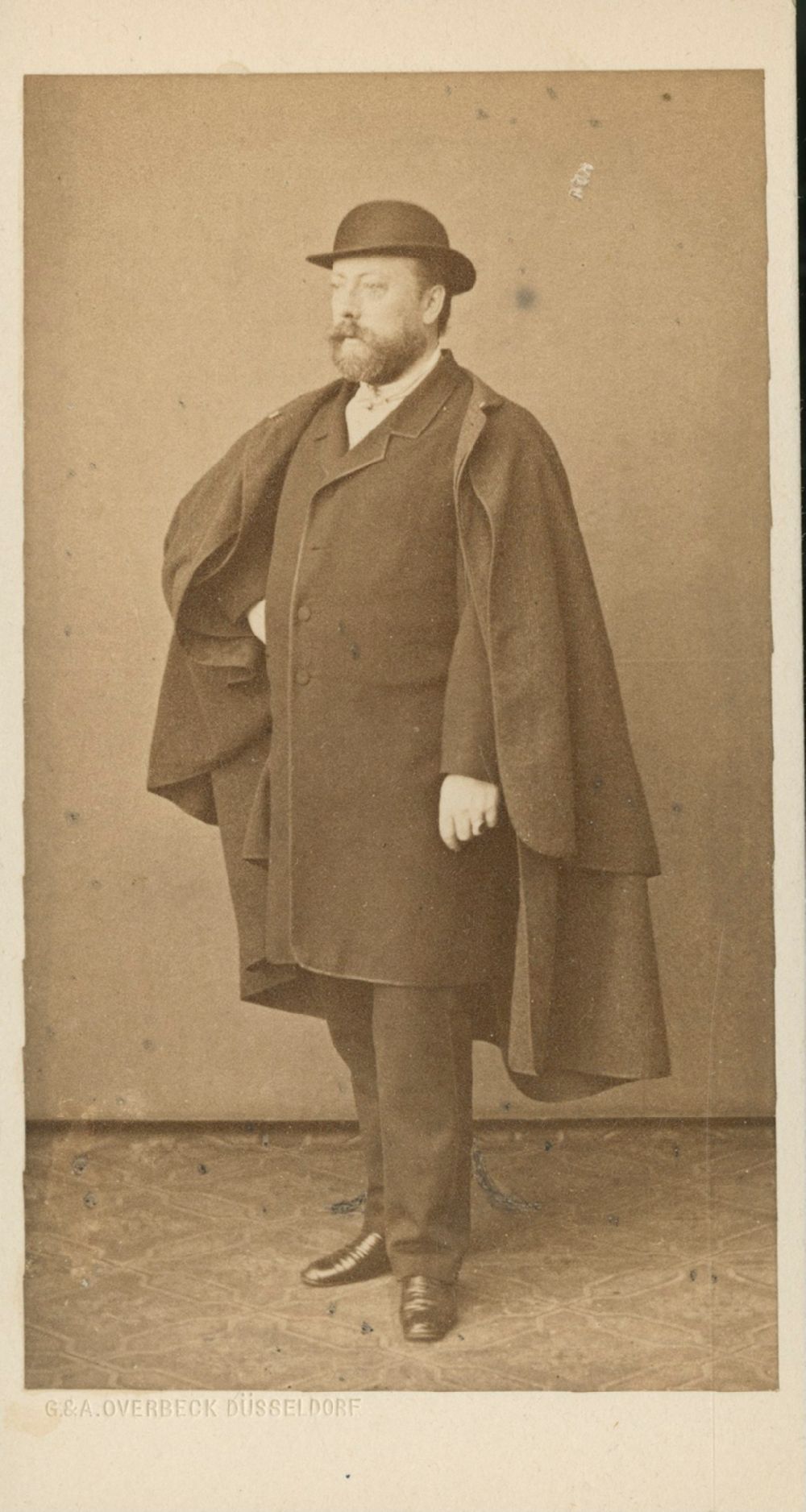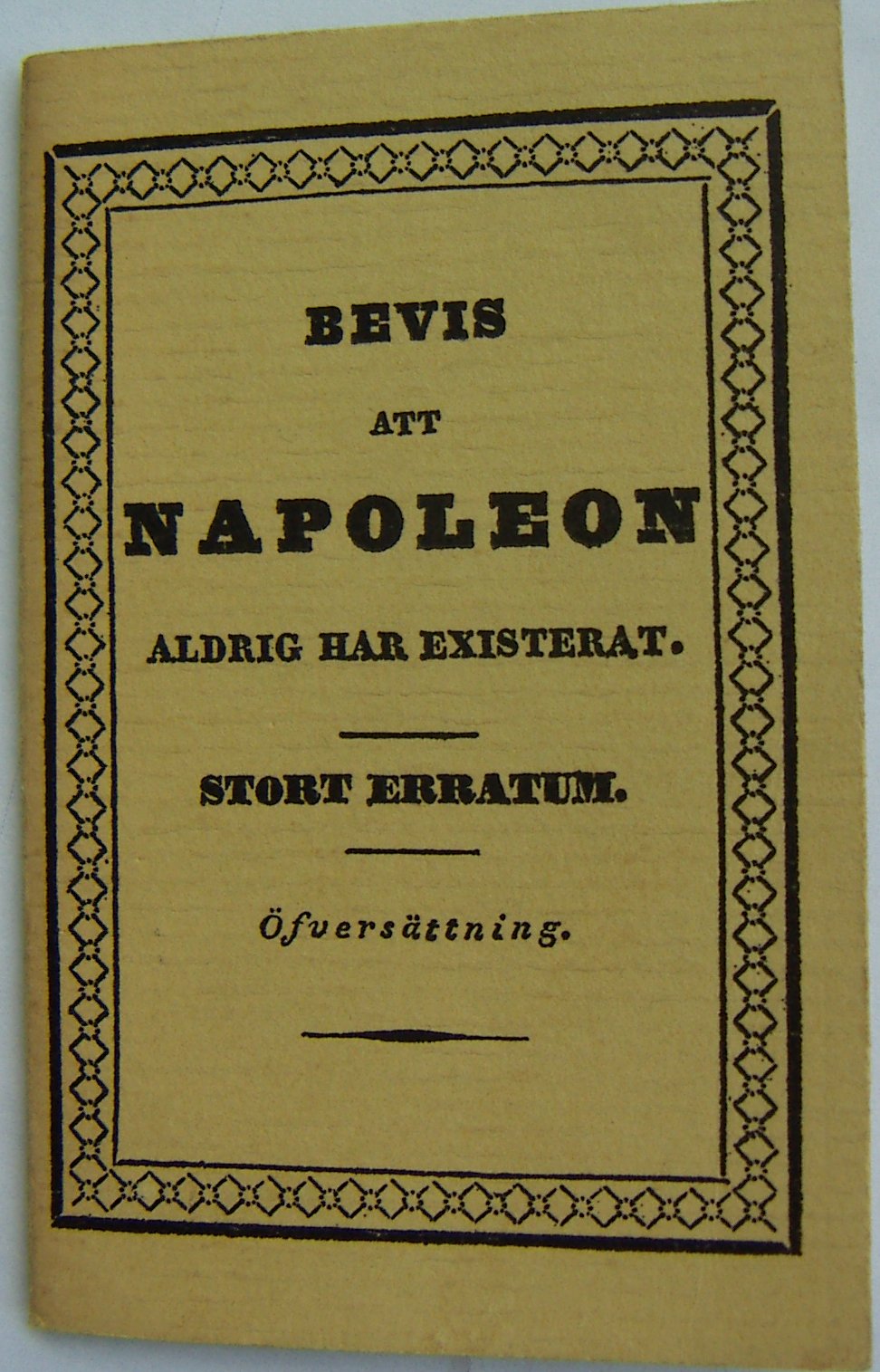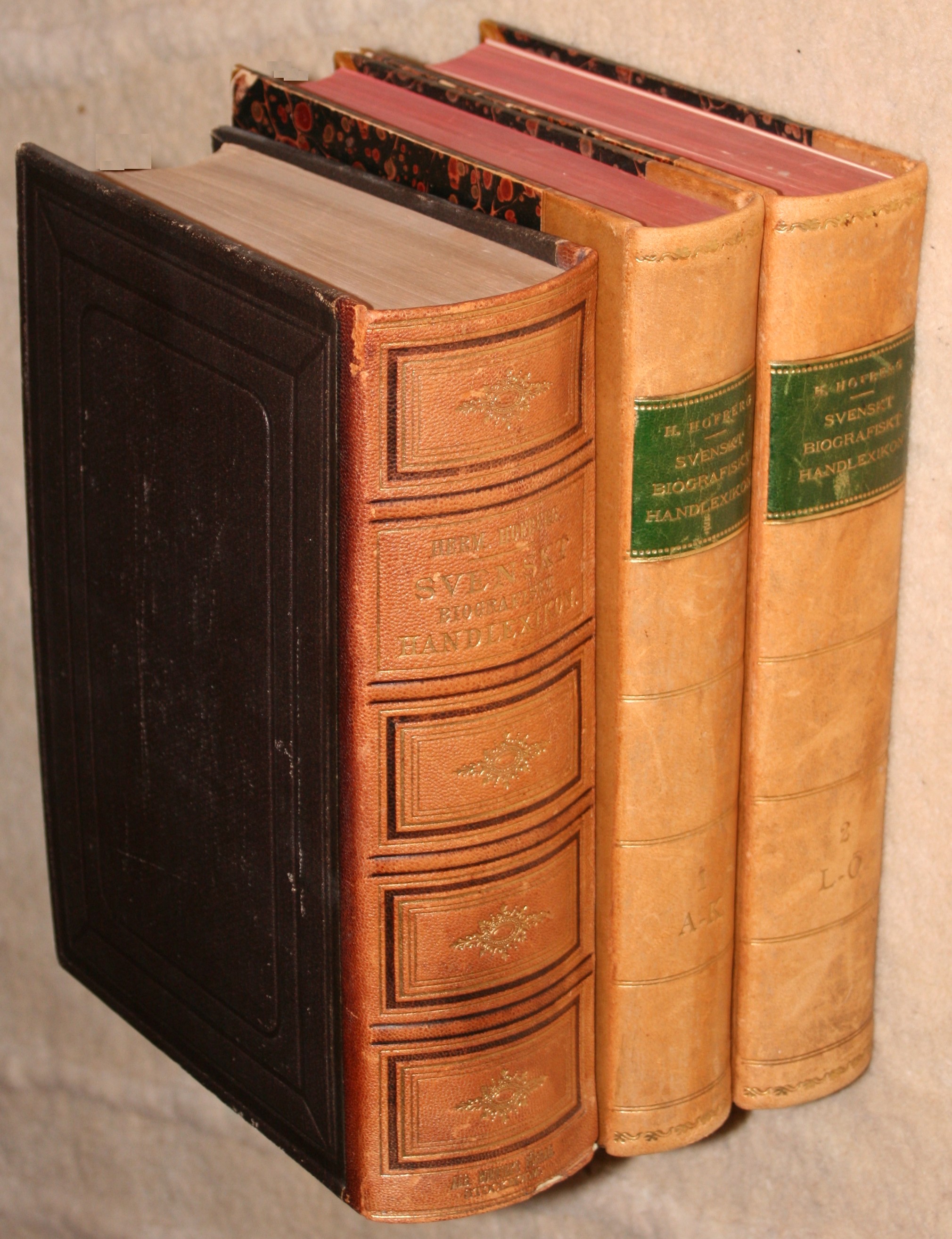|
Marcus Larson
Simeon Marcus Larson (5 January 1825 – 25 January 1864) was a Swedish landscape painter from Åtvidaberg, Östergötland. He has been recognized as "one of Sweden's foremost 19th-century painters" and labeled as "the most outstanding of the Swedish Düsseldorf painters." His paintings were known for being dramatic and primarily depicted rivers under violent skies as well as shipwrecks in storms. Early career Larson's father was a farm owner but Larson did not inherit any possessions from him when he died and therefore moved to Stockholm to get a job. There he was hired by a saddle maker. This saddle maker saw Larson's talent for drawing and thought it might be of use for carriage sketches and such. Larson was therefore given permission to attend courses at the Royal Swedish Academy of Arts during the evenings. While at the Academy, Larson discovered his calling for painting and made the decision to start a career dedicated to art. He completed his studies at the school betwe ... [...More Info...] [...Related Items...] OR: [Wikipedia] [Google] [Baidu] |
Daguerreotype
Daguerreotype (; french: daguerréotype) was the first publicly available photographic process; it was widely used during the 1840s and 1850s. "Daguerreotype" also refers to an image created through this process. Invented by Louis Daguerre and introduced worldwide in 1839, the daguerreotype was almost completely superseded by 1860 with new, less expensive processes, such as ambrotype ( collodion process), that yield more readily viewable images. There has been a revival of the daguerreotype since the late 20th century by a small number of photographers interested in making artistic use of early photographic processes. To make the image, a daguerreotypist polished a sheet of silver-plated copper to a mirror finish; treated it with fumes that made its surface light-sensitive; exposed it in a camera for as long as was judged to be necessary, which could be as little as a few seconds for brightly sunlit subjects or much longer with less intense lighting; made the resulting ... [...More Info...] [...Related Items...] OR: [Wikipedia] [Google] [Baidu] |
Andreas Achenbach
Andreas Achenbach (29 September 1815, Kassel – 1 April 1910, Düsseldorf) was a German landscape and seascape painter in the Romantic style. He is considered to be one of the founders of the Düsseldorf School. His brother, Oswald, was also a well known landscape painter. Together, based on their initials, they were known as the "Alpha and Omega" of landscape painters. Biography His father, Hermann,(1783–1849) was a merchant by trade, but worked at a number of professions. In 1816, he became the manager of a metal factory in Mannheim. Two years later, they moved to St.Petersburg, where his father wanted to set up a factory with money that his mother had received as an inheritance. It was here that Andreas took his first drawing lessons. The project failed and they returned to Rhine Province in 1823. Soon, his father had established a brewery in Düsseldorf, with an inn that was frequented by the local art community. There, in 1827, he began his artistic education in earnes ... [...More Info...] [...Related Items...] OR: [Wikipedia] [Google] [Baidu] |
19th-century Swedish Painters
The 19th (nineteenth) century began on 1 January 1801 ( MDCCCI), and ended on 31 December 1900 ( MCM). The 19th century was the ninth century of the 2nd millennium. The 19th century was characterized by vast social upheaval. Slavery was abolished in much of Europe and the Americas. The First Industrial Revolution, though it began in the late 18th century, expanding beyond its British homeland for the first time during this century, particularly remaking the economies and societies of the Low Countries, the Rhineland, Northern Italy, and the Northeastern United States. A few decades later, the Second Industrial Revolution led to ever more massive urbanization and much higher levels of productivity, profit, and prosperity, a pattern that continued into the 20th century. The Islamic gunpowder empires fell into decline and European imperialism brought much of South Asia, Southeast Asia, and almost all of Africa under colonial rule. It was also marked by the collapse of the l ... [...More Info...] [...Related Items...] OR: [Wikipedia] [Google] [Baidu] |
Swedish Landscape Painters
Swedish or ' may refer to: Anything from or related to Sweden, a country in Northern Europe. Or, specifically: * Swedish language, a North Germanic language spoken primarily in Sweden and Finland ** Swedish alphabet, the official alphabet used by the Swedish language * Swedish people or Swedes, persons with a Swedish ancestral or ethnic identity ** A national or citizen of Sweden, see demographics of Sweden The demography of Sweden is monitored by the ''Statistiska centralbyrån'' (Statistics Sweden). Sweden's population was 10,481,937 (May 2022), making it the 15th-most populous country in Europe after Czech Republic, the 10th-most populous m ... ** Culture of Sweden * Swedish cuisine See also * * Swedish Church (other) * Swedish Institute (other) * Swedish invasion (other) * Swedish Open (other) {{disambig Language and nationality disambiguation pages ... [...More Info...] [...Related Items...] OR: [Wikipedia] [Google] [Baidu] |
Albert Bonniers Förlag
Albert Bonniers Förlag is a publishing company based in Stockholm, Sweden. Albert Bonniers Förlag is part of the book publishing house Bonnierförlagen, which also includes Wahlström & Widstrand and Bonnier Carlsen. History Albert Bonnier (1820–1900) established the company in 1837 in Stockholm. Under his son and successor Karl Otto Bonnier (1856–1941), the company grew to be one of the largest publishers in Sweden. Many well-known Swedish authors have been published by Albert Bonniers Förlag. Notable authors have included August Strindberg, Verner von Heidenstam, Gustaf Fröding, Selma Lagerlöf and Hjalmar Söderberg. Albert Bonniers Förlag publishes around 100 books per year. Its publications have been characterized by versatility, including novels, poetry, memoirs, biographies, essays and travelogues as well as a variety of non-fiction books. Contemporary writers include Tomas Tranströmer, Carlos Ruiz Zafón Carlos Ruiz Zafón (; 25 September 1964 – ... [...More Info...] [...Related Items...] OR: [Wikipedia] [Google] [Baidu] |
Svenskt Biografiskt Handlexikon
''Svenskt biografiskt handlexikon'' () is a compact Swedish dictionary of biography first published in 1873–1876 by the physician and antiquarian Herman Hofberg (1823–1883). The second, updated edition was published in 1906, under the editorship of Frithiof Heurlin, Viktor Millqvist, and Olof Rubenson. The second edition, two volumes of all together 1,445 pages, contains 4,419 articles on families and individuals, "renowned Swedish men and women from the reformation until the present times", and more than 3,000 miniature portraits. See also * Svenskt biografiskt lexikon External links *Svenskt biografiskt handlexikon', digitized facsimile, at the Project Runeberg Project Runeberg ( sv, Projekt Runeberg) is a digital cultural archive initiative that publishes free electronic versions of books significant to the culture and history of the Nordic countries. Patterned after Project Gutenberg, it was founded ... website 1873 non-fiction books 1874 non-fiction books 1875 ... [...More Info...] [...Related Items...] OR: [Wikipedia] [Google] [Baidu] |
Tuberculosis
Tuberculosis (TB) is an infectious disease usually caused by ''Mycobacterium tuberculosis'' (MTB) bacteria. Tuberculosis generally affects the lungs, but it can also affect other parts of the body. Most infections show no symptoms, in which case it is known as latent tuberculosis. Around 10% of latent infections progress to active disease which, if left untreated, kill about half of those affected. Typical symptoms of active TB are chronic cough with hemoptysis, blood-containing sputum, mucus, fever, night sweats, and weight loss. It was historically referred to as consumption due to the weight loss associated with the disease. Infection of other organs can cause a wide range of symptoms. Tuberculosis is Human-to-human transmission, spread from one person to the next Airborne disease, through the air when people who have active TB in their lungs cough, spit, speak, or sneeze. People with Latent TB do not spread the disease. Active infection occurs more often in people wi ... [...More Info...] [...Related Items...] OR: [Wikipedia] [Google] [Baidu] |
1862 International Exhibition
The International Exhibition of 1862, or Great London Exposition, was a world's fair. It was held from 1 May to 1 November 1862, beside the gardens of the Royal Horticultural Society, South Kensington, London, England, on a site that now houses museums including the Natural History Museum and the Science Museum. Organisation The exposition was sponsored by the Royal Society of Arts, Manufactures and Trade, and featured over 28,000 exhibitors from 36 countries, representing a wide range of industry, technology, and the arts. William Sterndale Bennett composed music for the opening ceremony. All told, it attracted about 6.1 million visitors. Receipts (£459,632) were slightly above cost (£458,842), leaving a total profit of £790. It was held in South Kensington, London, on a site now occupied by the Natural History Museum. The buildings, which occupied 21 acres, were designed by Captain Francis Fowke of the Royal Engineers, and built by Lucas Brothers and Sir John Kelk. The ... [...More Info...] [...Related Items...] OR: [Wikipedia] [Google] [Baidu] |
Saint Petersburg
Saint Petersburg ( rus, links=no, Санкт-Петербург, a=Ru-Sankt Peterburg Leningrad Petrograd Piter.ogg, r=Sankt-Peterburg, p=ˈsankt pʲɪtʲɪrˈburk), formerly known as Petrograd (1914–1924) and later Leningrad (1924–1991), is the List of cities and towns in Russia by population, second-largest city in Russia. It is situated on the Neva River, at the head of the Gulf of Finland on the Baltic Sea, with a population of roughly 5.4 million residents. Saint Petersburg is the List of European cities by population within city limits, fourth-most populous city in Europe after Istanbul, Moscow and London, the List of cities and towns around the Baltic Sea, most populous city on the Baltic Sea, and the world's List of northernmost items#Cities and settlements, northernmost city of more than 1 million residents. As Russia's Imperial capital, and a Ports of the Baltic Sea, historically strategic port, it is governed as a Federal cities of Russia, federal city. ... [...More Info...] [...Related Items...] OR: [Wikipedia] [Google] [Baidu] |
Helsinki
Helsinki ( or ; ; sv, Helsingfors, ) is the Capital city, capital, primate city, primate, and List of cities and towns in Finland, most populous city of Finland. Located on the shore of the Gulf of Finland, it is the seat of the region of Uusimaa in southern Finland, and has a population of . The Helsinki urban area, city's urban area has a population of , making it by far the List of urban areas in Finland by population, most populous urban area in Finland as well as the country's most important center for politics, education, finance, culture, and research; while Tampere in the Pirkanmaa region, located to the north from Helsinki, is the second largest urban area in Finland. Helsinki is located north of Tallinn, Estonia, east of Stockholm, Sweden, and west of Saint Petersburg, Russia. It has History of Helsinki, close historical ties with these three cities. Together with the cities of Espoo, Vantaa, and Kauniainen (and surrounding commuter towns, including the eastern ... [...More Info...] [...Related Items...] OR: [Wikipedia] [Google] [Baidu] |
Scania
Scania, also known by its native name of Skåne (, ), is the southernmost of the historical provinces (''landskap'') of Sweden. Located in the south tip of the geographical region of Götaland, the province is roughly conterminous with Skåne County, created in 1997. Like the other former provinces of Sweden, Scania still features in colloquial speech and in cultural references, and can therefore not be regarded as an archaic concept. Within Scania there are 33 municipalities that are autonomous within the Skåne Regional Council. Scania's largest city, Malmö, is the third-largest city in Sweden, as well as the fifth-largest in Scandinavia. To the north, Scania borders the former provinces of Halland and Småland, to the northeast Blekinge, to the east and south the Baltic Sea, and to the west Öresund. Since 2000, a road and railway bridge, the Öresund Bridge, bridges the Sound and connects Scania with Denmark. Scania forms part of the transnational Øresund Region ... [...More Info...] [...Related Items...] OR: [Wikipedia] [Google] [Baidu] |
Vimmerby
Vimmerby () is a city and the seat of Vimmerby Municipality, Kalmar County, Sweden with 10,934 inhabitants in 2010. Overview Stångån is a small river running through the city. Vimmerby had its charter as early as the fourteenth century. The main street, ''Storgatan'', still has the shape in which it was built in the medieval time. There are also many old wooden houses in the city. Vimmerby is currently a tourist attraction due to historical links with Swedish author Astrid Lindgren (1907–2002). The Astrid Lindgren's World is a theme park for children that has themes from her books, and is visited by fans from around the world. When Astrid Lindgren wrote her books about the country boy Emil of Lönneberga she used much information from her own upbringing in the rural areas of Vimmerby. Another well-known person from Vimmerby is Swedish record international goalkeeper Thomas Ravelli. Vimmerby Church Vimmerby Church (''Vimmerby kyrka'') was built in 1854-1855. The church ... [...More Info...] [...Related Items...] OR: [Wikipedia] [Google] [Baidu] |









